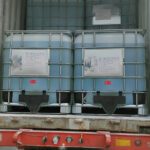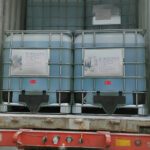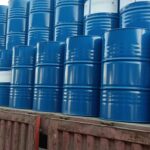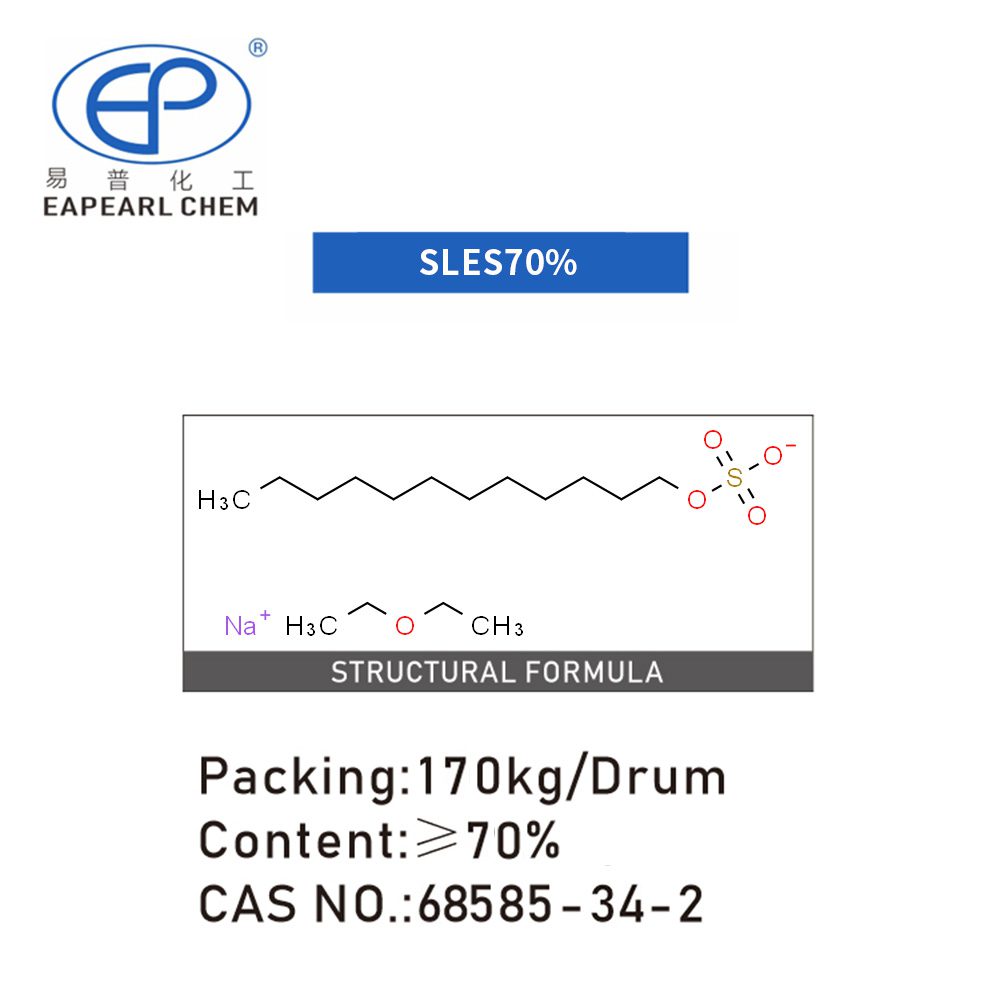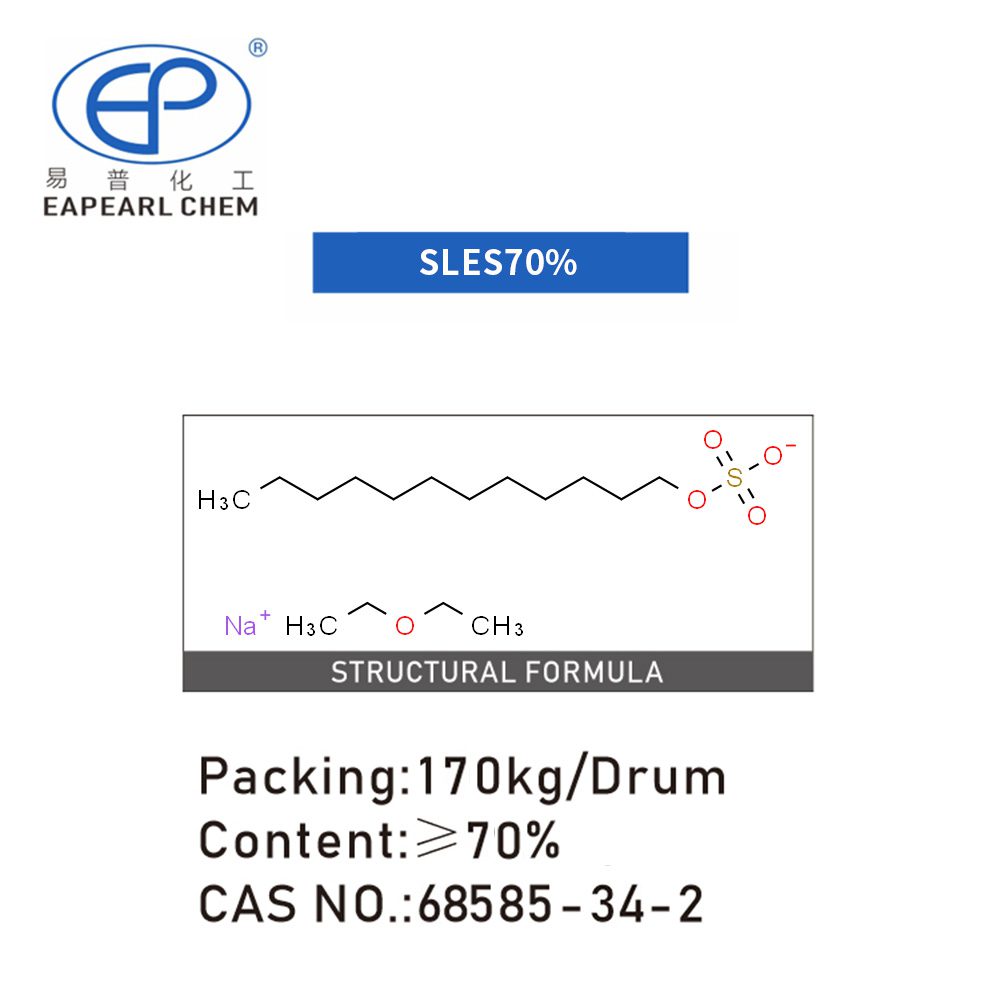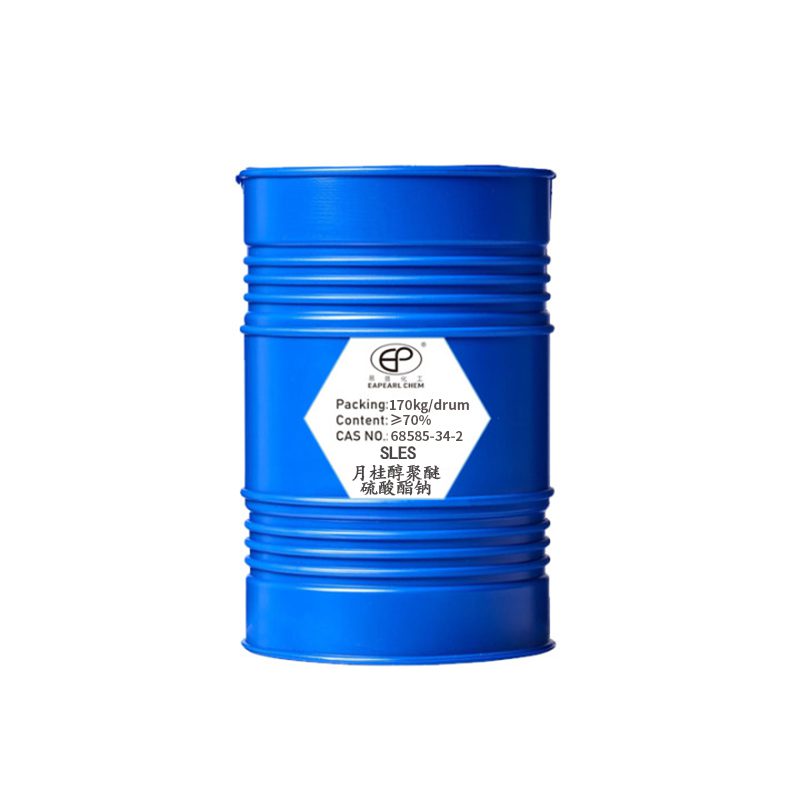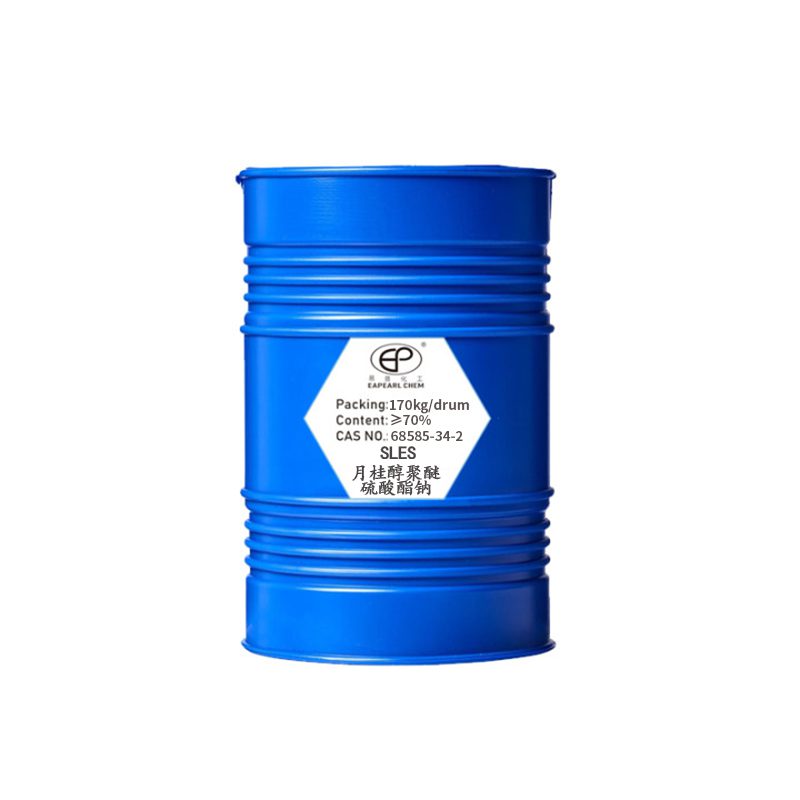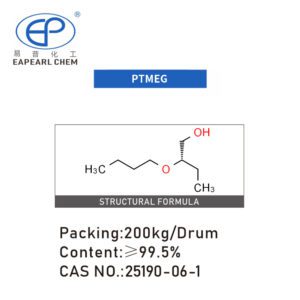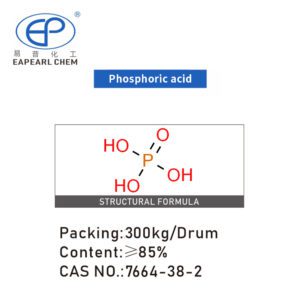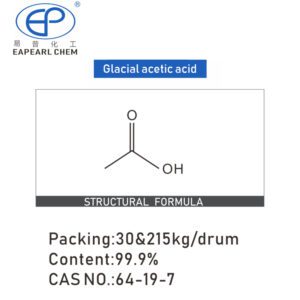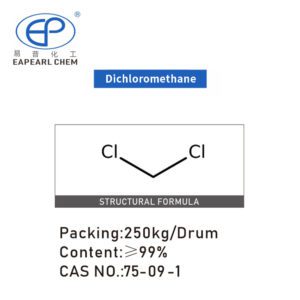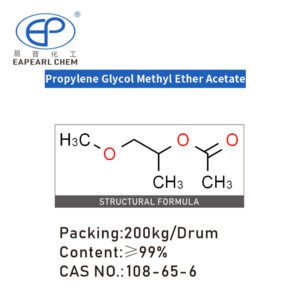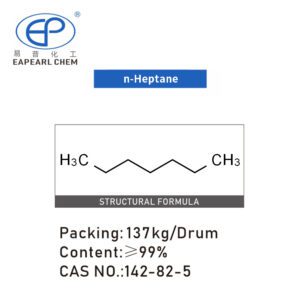SLES70%
SLES represents an exceptional anionic surfactant, exhibiting remarkable performance. It is a light yellow, viscous liquid that effortlessly dissolves in water. Its notable attributes include outstanding decontamination capabilities, unique emulsification properties, and impressive foaming characteristics. Due to these remarkable features, it finds widespread application in various daily cleaning products. As a surfactant, SLES possesses excellent thickening properties and a commendable ability to generate rich foam. Furthermore, it exhibits unique bactericidal properties and effectively counteracts the adverse effects of hard water.
| Product Name: | SLES70% |
|---|---|
| CAS No.: | 68585-34-2 |
| Purity | 70% |
| Packing: | 170kg/drum |
| HScode: | 3402110000 |
We use the latest network security technology to protect your personal information from leakage, and to ensure that you can shop safely and securely.
Share
Description:
Preparation method:
Creating SLES involves the utilization of coconut oil and sulfuric acid as primary ingredients. The surfactant is ultimately produced by subjecting these raw materials to various chemical treatments and processing techniques, such as the ethoxylation reaction.
Synonyms:
Characteristics:
| Molecular Formula | C12H26Na2O5S |
| Molar Mass | 328.38 |
| Water Solubility | soluble in hot water |
| Solubility | Chloroform (Slightly), Methanol (Sparingly), Water (Slightly) |
| Appearance | Gel |
| Color | Colourless to Off-White |
| Storage Condition | Hygroscopic, Refrigerator, Under inert atmosphere |
| Stability | Hygroscopic |
| PSA | 108.87 |
| XLogP3 | 3.6424 |
Use
FAQ:
Q1. What is Sodium Lauryl Ether Sulfate (SLES)?
A1. Sodium Lauryl Ether Sulfate, or SLES or Sodium Laureth Sulfate, is a highly utilized anionic surfactant derived from coconut or palm kernel oil. Its exceptional cleansing and foaming properties make it a popular ingredient in various personal care products, household cleaners, and industrial applications.
Q2. What are the primary applications of SLES?
A2. SLES finds extensive application in formulating various cleansing products, including shampoos, body washes, facial cleansers, liquid soaps, bubble baths, dishwashing liquids, and laundry detergents. Furthermore, it is an effective emulsifier, wetting agent, and foaming agent in numerous industrial processes.
Q3. What benefits does SLES offer?
A3. SLES offers several advantages, encompassing exceptional foaming ability, efficient emulsification, and cleaning power, good solubility in water, and compatibility with other surfactants and additives. It aids in creating a rich lather, removes dirt and oil from surfaces, and enhances the products’ overall cleaning performance.
Q4. Is SLES safe for use in personal care products?
A4. SLES is considered safe for personal care products when utilized according to the recommended guidelines. It has undergone extensive testing and regulatory assessments, ensuring compliance with stringent quality and safety standards. However, as with any chemical substance, handling SLES carefully and adhering to proper safety precautions during its handling and formulation is essential.
Q5. Is SLES environmentally friendly?
A5. SLES is readily biodegradable, meaning it can be naturally broken down into non-toxic substances through natural processes. This characteristic makes it a preferred choice for environmentally conscious formulations. However, it is important to note that other ingredients also influence the environmental impact of a formulation, as well as overall product usage and disposal practices.
Q6. What is the typical concentration of SLES used in formulations?
A6. The concentration of SLES in formulations varies depending on the specific application and desired performance. In personal care products, it is commonly used at concentrations ranging from 1% to 30%, while household and industrial cleaners can utilize concentrations varying from 5% to 50% or higher.
Q7. Can SLES cause skin irritation or allergies?
A7. In rare cases, high concentrations of SLES may lead to skin irritation or allergies in some individuals. However, when used in formulations at appropriate levels, SLES is generally well-tolerated by most people. Conducting patch tests and complying with applicable regulations and guidelines to ensure product safety is always recommended.
Q8. Are there any restrictions or regulations regarding the use of SLES?
A8. Countries may impose specific regulations and restrictions on using SLES in certain applications. It is crucial to be aware of and comply with the relevant regulatory requirements in your target markets. Additionally, staying informed about updated regulations and ensuring proper labeling and documentation is essential.
Q9. What packaging options are available for SLES?
A9. We provide a diverse range of packaging options for SLES to cater to various customer needs. These options include bulk packaging in drums or IBC totes for larger quantities and containers such as bottles, jerry cans, or flexitanks for smaller volumes. Custom packaging solutions can also be discussed based on specific requirements.
Q10. How can I inquire about purchasing SLES or request more information?
A10. Don’t hesitate to contact our dedicated sales team to inquire about purchasing SLES or request additional information. You can contact us via email or phone, and our representatives will be delighted to assist you with your requirements, pricing, technical specifications, and any other inquiries you may have.
Please bear in mind that the information in this FAQ serves as a general guide and should not replace in-depth product knowledge, formulation expertise, or compliance with applicable laws and regulations.
相关产品
Loading Video or Picture:



